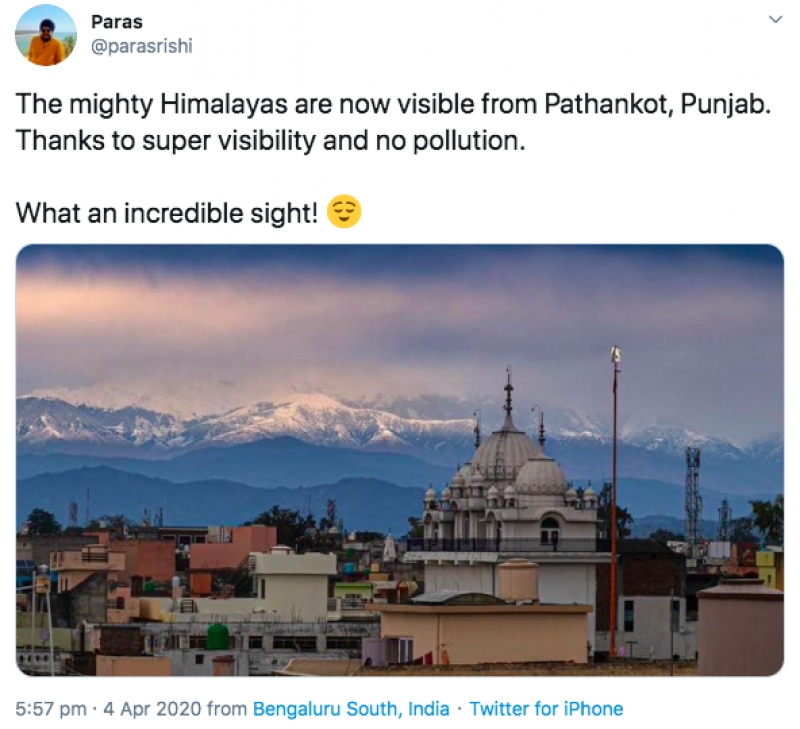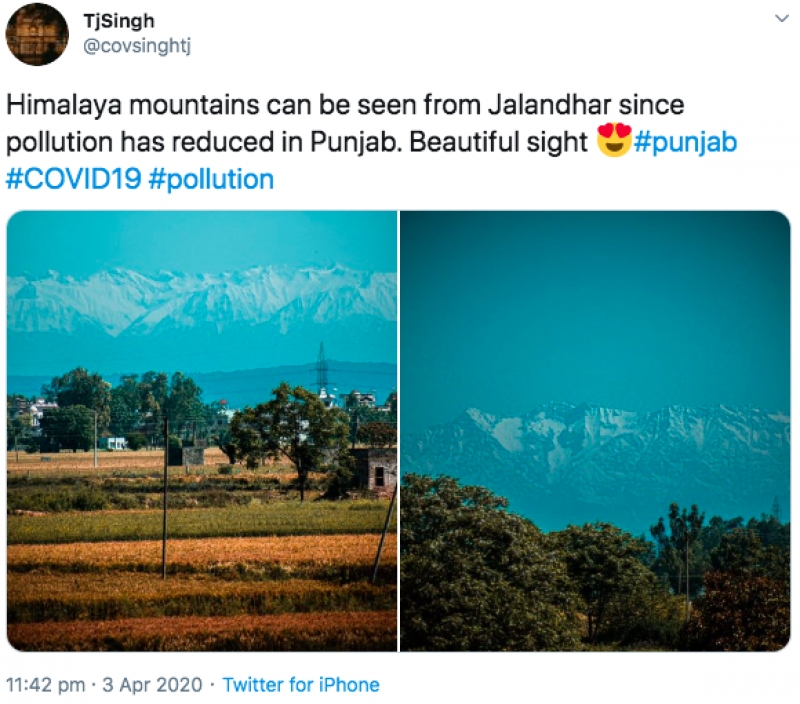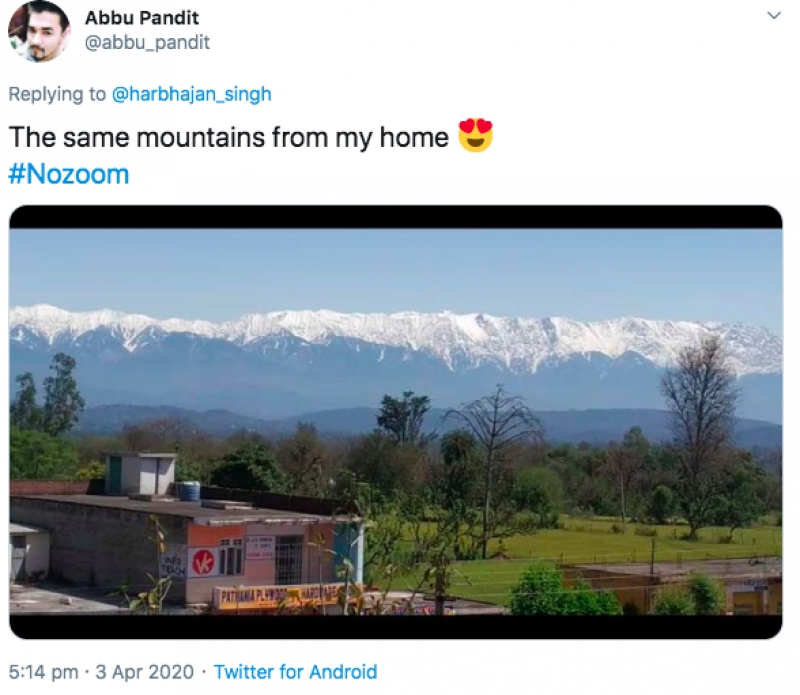The Himalayas, the highest mountain range in the world which encompasses the illustrious Mount Everest, have become visible from various parts of India for the first time in three decades.
The sweeping lockdown of India’s 1.3 billion people to combat the imminent spread of the coronavirus takes the edge off air pollution in the country.
Last year, India – infamous for its dirty air – topped the charts of the worst polluted as home to 14 of the 20 cities with the most hazardous air.
It has since witnessed a drastic improvement in the air quality index in nearly 90% of the 103 cities monitored by the country’s Central Pollution Control Board. The severe lockdown curtails activities that belch out coarse particles harmful to health.
Awestricken locals from the Jalandhar district in Punjab, nearly 125 miles away from the Himalayas, flocked to social media and shared trip photos of India‘s glorious mountains with peaks crowned with a headdress of ice.
“We can see the snow-covered mountains clearly from our roofs. And not just that, stars are visible at night. I have never seen anything like this in recent times,” exclaimed Mr Seechewal, who has been espousing environmental conservation.
Residents have claimed it is the first time the peaks are perceptible to the naked eye, and expressed their gratitude to the improving air quality for the phenomenon.

Image credit: Paras

Image credit: TJSingh

Image credit: Abbu Pandit
Long notorious for its smog fuelled by traffic, fossil fuel burning power plants and heavy industries – the staggering decline in pollutants and the ensuing blue skies with the silhouette of the towering mountains signal the dawning of a new day for the second most populous country in the world – even at a time of crisis.






